Focus on the front sight, crystal clear… pull the trigger slowly to the rear. Ding! Hit!
The above mantra is baked into many a seasoned rifleman’s mind. If it isn’t baked into your own mind, perhaps you entered the world of the AR15 in the post iron sights era. Hey, it’s not a bad thing, after all optics are the future, but if you still want to master iron sights… you better learn what it means to focus on that front sight.
As a shooter aligns the iron sights on target, he has to understand that there is a very unique and dynamic scene he or she is presenting in front of the mk 1 eyeball. It consists of a target, a front sight, a rear peep sight, and the human eye. The human eye is a wonderful instrument, but it lacks the ability to focus on the multiple objects presented in front of it. Ergo, the mantra “Focus on the Front Sight, Crystal Clear” has been the John 3:16 of the modern rifleman. So why is that? What does it matter? …and what the hell does a Snellen chart have to do with it?
I am glad you asked. We will get there shortly.
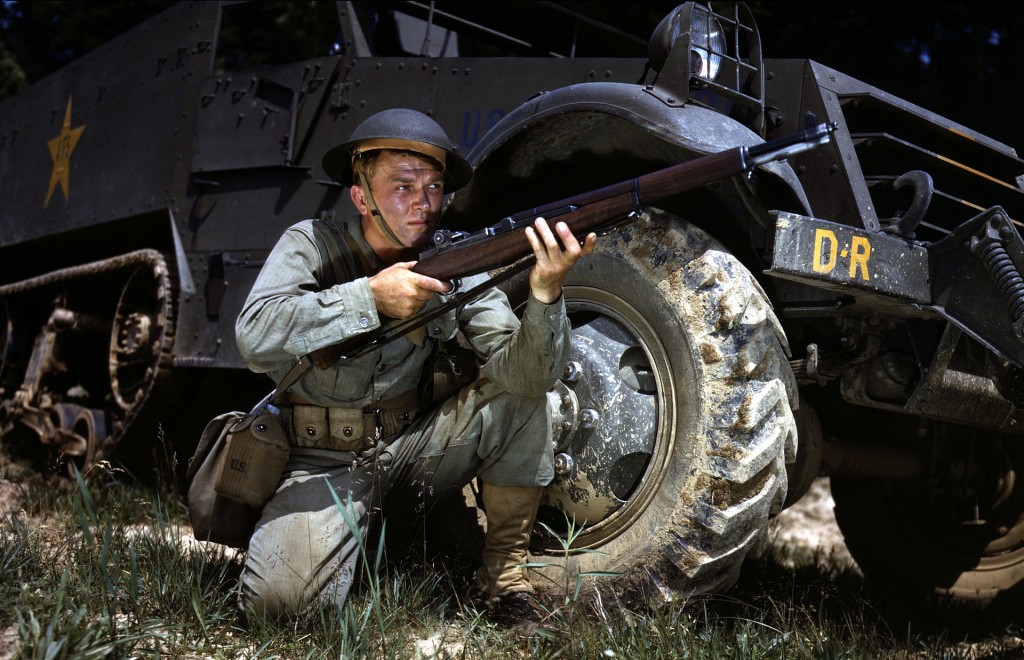
Obligatory Rifleman Photograph. Long Iron Sight Radius. 30-06. Wood Stock. MUH RIFLE.
The complex scene a rifleman observes is composed of a focal point, the background, and the foreground. The foreground is really the distance past the rear peep and the stops at the front sight. The front sight is your focal point. It is here that your focus is on obtaining a crystal clear front sight. The background is your target. The target is slightly fuzzy since it is not your focal point. The foreground / peep, front sight focal point, and background / target are the trifecta of a perfect sight picture. Having a crystal clear front sight permits you the ability to align it as damn near perfect as you can against the slightly fuzzy target.
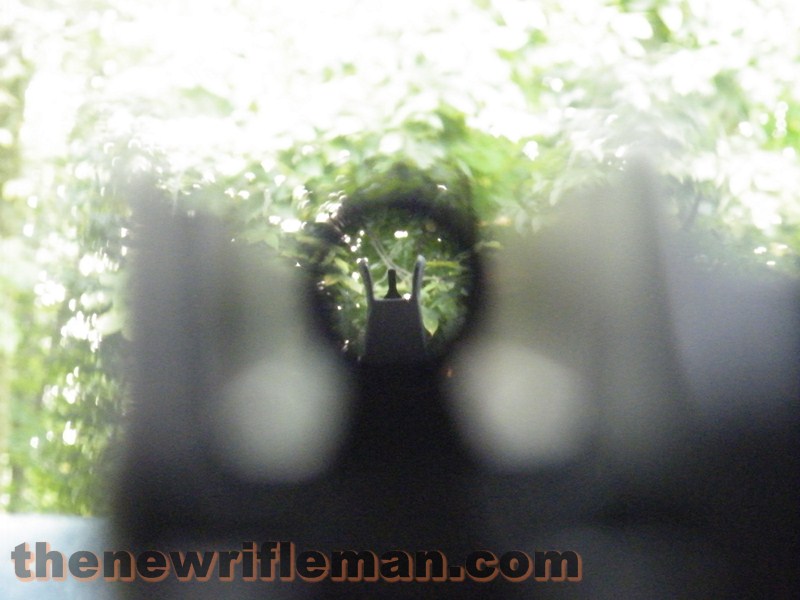
If we reverse the focal point to be the target, then your front sight becomes the fuzzy object and you then align the fuzzy front sight against a crystal clear target. The further out your target / and your focal point, the fuzzier / out of focus the front sight becomes. This is not conducive to repeatable, consistent shooting. Since your target can present itself at any distance, focusing on the target will give you a inconsistent sight picture as your front sight becomes fuzzy or clearer depending on how close / far the target is. No bueno.
The only time you take a target focus is when using the *large* aperture rear ghost ring. By its design and your mk1 eyeballs nature, you cannot focus on the front sight and have any semblance of a clear target since the large ghost ring doesn’t give you any of the visual benefits of the small peep aperture. Focus on the front sight with the large aperture and your target will be a huge fuzzy blob.
Front Sight Crystal Clear… and Now the Details.
So now that we have established why the front sight is the focal point…. and that reason is consistency… we must now look at the details. What makes the sight picture better and what makes it worse? Are all rifles and carbines equal? Why does sight radius matter?
In the simplest of terms, sight radius matters due to the geometric relationship between your front and rear sights. The longer the distance between the two the more obvious movement of the front sight becomes and thus it can be corrected. That is the common explanation as to why sight radius matters, but there is another detail that is often lost and overlooked which is just as important as the distance between the front and rear peep sights. Here it is: the further your focal point (being the front sight) is away from the eye, the clearer the target becomes. So not only does a longer sight radius allow you to easily see and correct alignment error, it also permits your eye a clearer view of the front sight AND the target.
Make no mistake, even with a rifle length sight distance, the target will still be slightly fuzzy. As we switch to a carbine sight radius, the target becomes a bit fuzzier and it is harder to make out details. As we continue to shrink the sight radius below carbine length gas systems, the front sight (I.E. your focal point) is too close for the eye to accommodate the sight and the target. Your target becomes a blurry blob and focusing on the front sight also becomes fatiguing to the eye. It becomes a system of diminishing returns as you shrink the sight radius from rifle on down. This impacts target clarity, your eye and its ability to maintain focus, and your ability to identify and correct geometric errors in sight alignment. In short, if you are going to run a PDW 5.56 with a very short sight radius, skip the irons and go straight to a dot or optic.
Unfortunately, that’s not all to it. What becomes interesting is when we start playing with peep sizes. As we shrink the peep size, we can bring some visual acuity back to improve the target clarity of both the rifle and carbine systems at the cost of light. A smaller peep lets less light into the eye and this would impact shooting ability in low light situations. So what did changing the peep do to visual acuity?
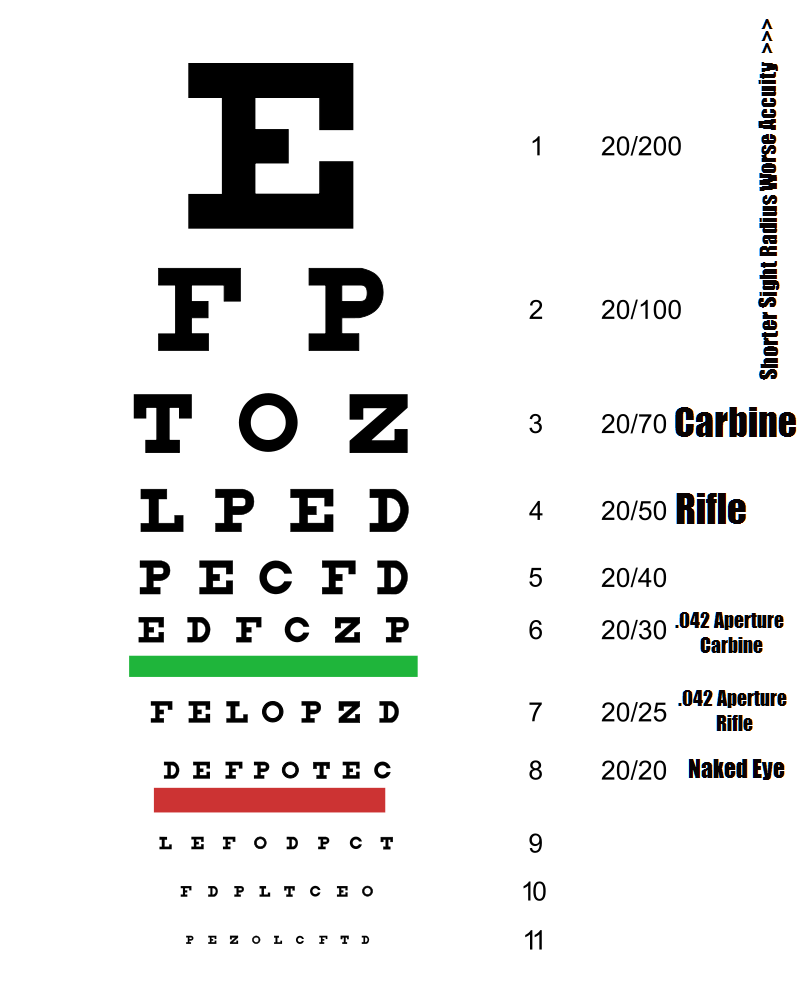
The longer the sight radius the better the visual acuity of the iron sight / target relationship. The shorter the sight radius, the weaker the visual acuity of the sights. Also, as we shrink the aperture, we begin to improve visual acuity across the board at the cost of light.
I ran a Snellen test on myself and documented the results.
Without a rifle or peep sight, my glasses permitted me 20/20 vision. I could make out line 8 without issue. Add a A2 rifle and a front sight focus, and my visual acuity deteriorated. Target clarity was at 20/50 with my glasses. Carbine sight radius was slightly worse. My targets visual acuity became that of 20/70.
I then added in a very small .042 national match aperture. The improvement in visual acuity was surprising. When the peep is shrunk from the mil-spec .070 aperture, to the .042, the target clarity jumped significantly. With a rifle in my hands and NM aperture, I saw as well as someone with 20/25 vision WHILE FOCUSING ON MY FRONT SIGHT.
As you can also see, the carbine improved to 20/30 surpassing the visual clarity of a A2 rifle with its stock mil-spec peep and longer sight radius. What’s happening here?

A hooded National Match .042 next to a .070 USGI small peep.
As we shrink the peep diameter, we effectively convert the rear sight into a pinhole camera so to speak. If you have ever used a pinhole camera or shrunk your aperture setting you might have noticed that the depth of field increases. This means that objects both near and far become in focus. As you increase the size of the aperture the depth of field decreases meaning things outside your focal point (front sight) become more out of focus.

Science! Well, some of this stuff is truly over my head. Take a look at the above photo. “Good depth of field. Sharp focus extends from in front of to past the subject.” That sounds like just what I want when shooting at a target! I want a crystal clear front sight and a crystal clear target! Wow! I just need a small peep! Enough of the excitement. High Power shooters have been using small peeps for years for the express purpose of improving front sight and target clarity. It’s something to see when you’re in the pit and a 60+ year old man is hammering copper and lead through the X at 600 yards with an iron sighted rifle. His machine is well tuned, and even the humble rear sight becomes an important tool in the overall package that is his accurate rifle.
For a Rifleman, Knowledge is Power.
Wrapping Up:
If your adamant about iron sights, get a rifle length system or increase your sight radius by use of a free float rail, and… optionally… get a smaller peep. Say .060 or .050 would be a good compromise between light loss and target clarity. Good luck finding one. It will likely be a national match hooded peep which means you cannot flip it down to use the ghost ring in low light, and even these will become extinct one day due to the High Power rules change. Wait, what’s this here in my pocket? Armalight to the rescue! That one has .050 and .060 but it would be wise to drill out that .060 as the traditional A2 Ghost Ring for low light shooting. Here is there .060 and .070 set and this one will also need the drill.
So again, get a long sight radius, and if you feel compelled shrink the aperture. If you want to run something equal to a carbine sight radius or smaller… then please shrink that aperture or skip the irons and go with a red dot. The shorter the relationship between the front and rear sight, the harder your eye must work and the results will worsen to the point where you are wasting the potential accuracy the carbine. Seriously, get a red dot or magnified optic. In this day and age, a modern rifleman needs to move to modern equipment. Irons, as fun as they are, waste accuracy potential that is yours for the taking with a quality optic.
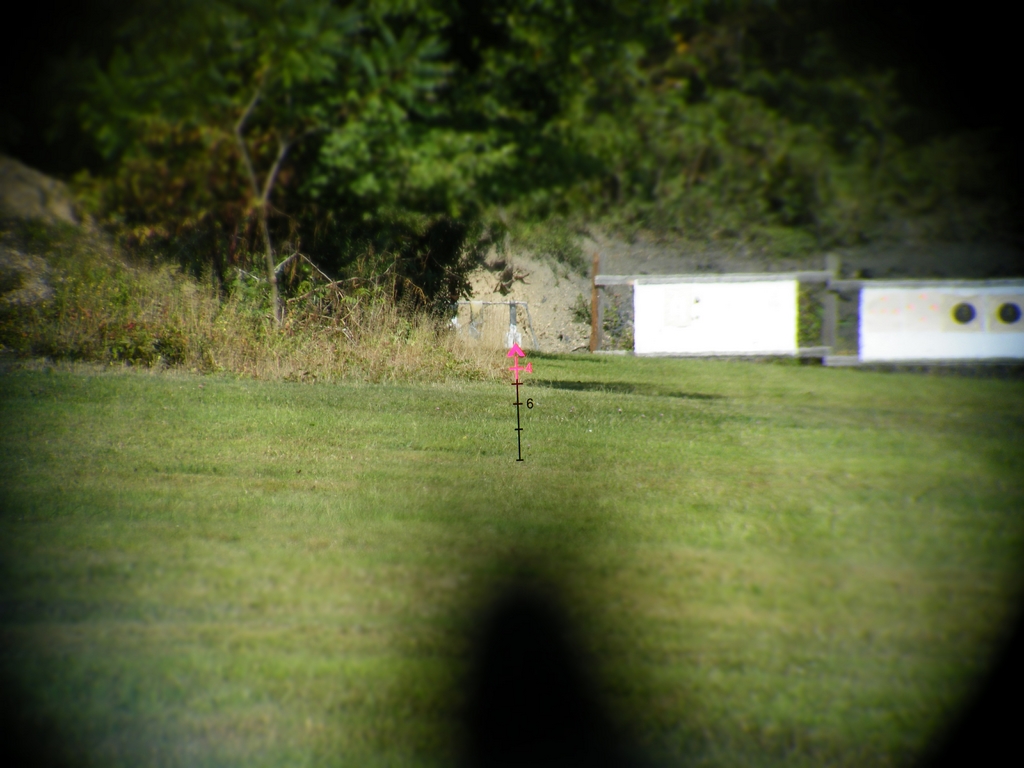
Target Crystal Clear and Well Magnified, In Perfect Alignment with the Chevron! Pull the Trigger Slowly to the Rear. Bing! Hit!
I hope the above article helped in your quest for accuracy and knowledge, but please consider the benefits of optics. Had you owned a scope already, I wouldn’t have had to write all that. 🙂
Welcome to the Modern Age… Rifleman.





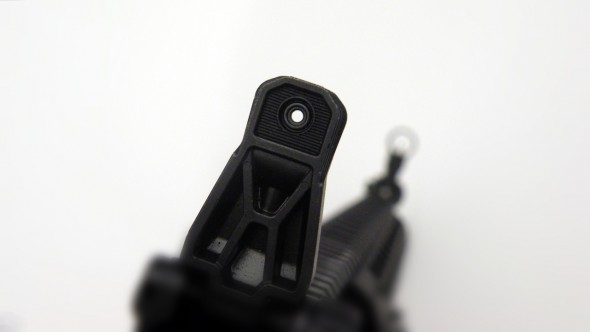



Years ago, I drilled and tapped out my A2 sight to accept carburetor jets.
Good info! I recall a couple years back when Kyle Defoor (tactical firearms trainer, former SEAl) published his findings concerning sight radius. He assumed that the rifle length sight radius (~20″) would be best, but his findings were that a 14″ radius provided the best accuracy (for him).
Now, his findings are pretty much based on a balance of speed and precision for close-in shooting. If a 14″ sight radius were actually that much better from a pure accuracy standpoint, I’m sure we’d see it get reflected in high power/CMP.
I was recently trying to look up that info but I couldn’t remember the trainer or where I saw that info you mentioned! Thanks a bunch I will have to go look into that again.
Dear Lothaen – First, thank you so much for a well researched article. Second, I want to pose something to you that has been on the tip of my brain for awhile but I am not smart enough to prove or disprove. Your article said “So not only does a longer sight radius allow you to easily see and correct alignment error, it also permits your eye a clearer view of the front sight AND the target.” I understand that the longer sight radius changes how the front sight and rear sight appear to the shooter and this is what enables the shooter to see and correct alignment errors. I am wondering if, at least regarding notched rear sights, the width of the notch and the width of the front sight blade can be adjusted so that one can achieve a long sight radius sight appearance on a short barrel. I’ve been playing with this a bit but COVID19 has me unable to test anything and, frankly, I have no idea how I would prove or disprove my idea short of “Well, it works for me!” 🙂 Take care and thank you again. -SW
Ultradyne USA makes the best set I have ever seen for a dual aperture sight system.